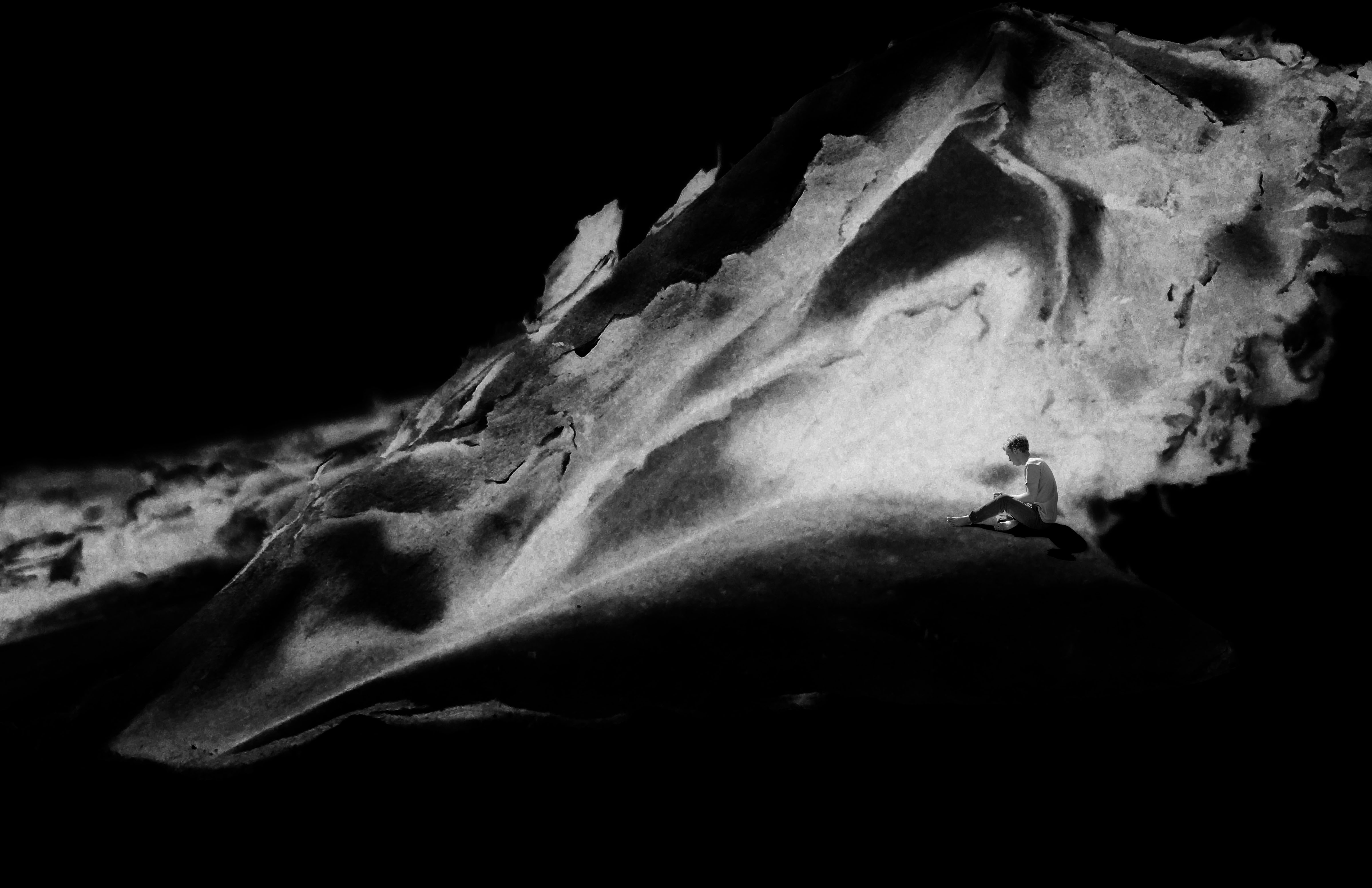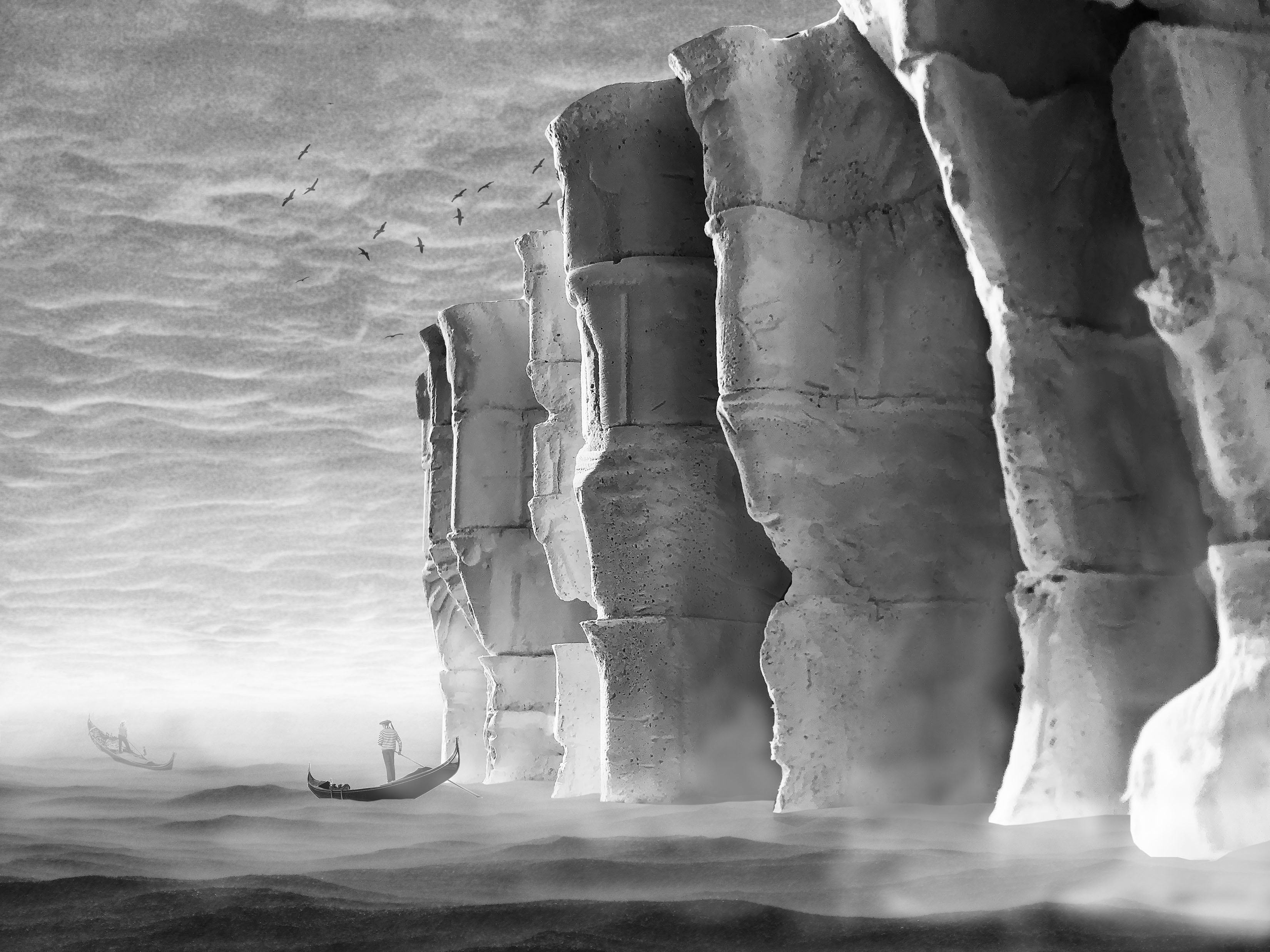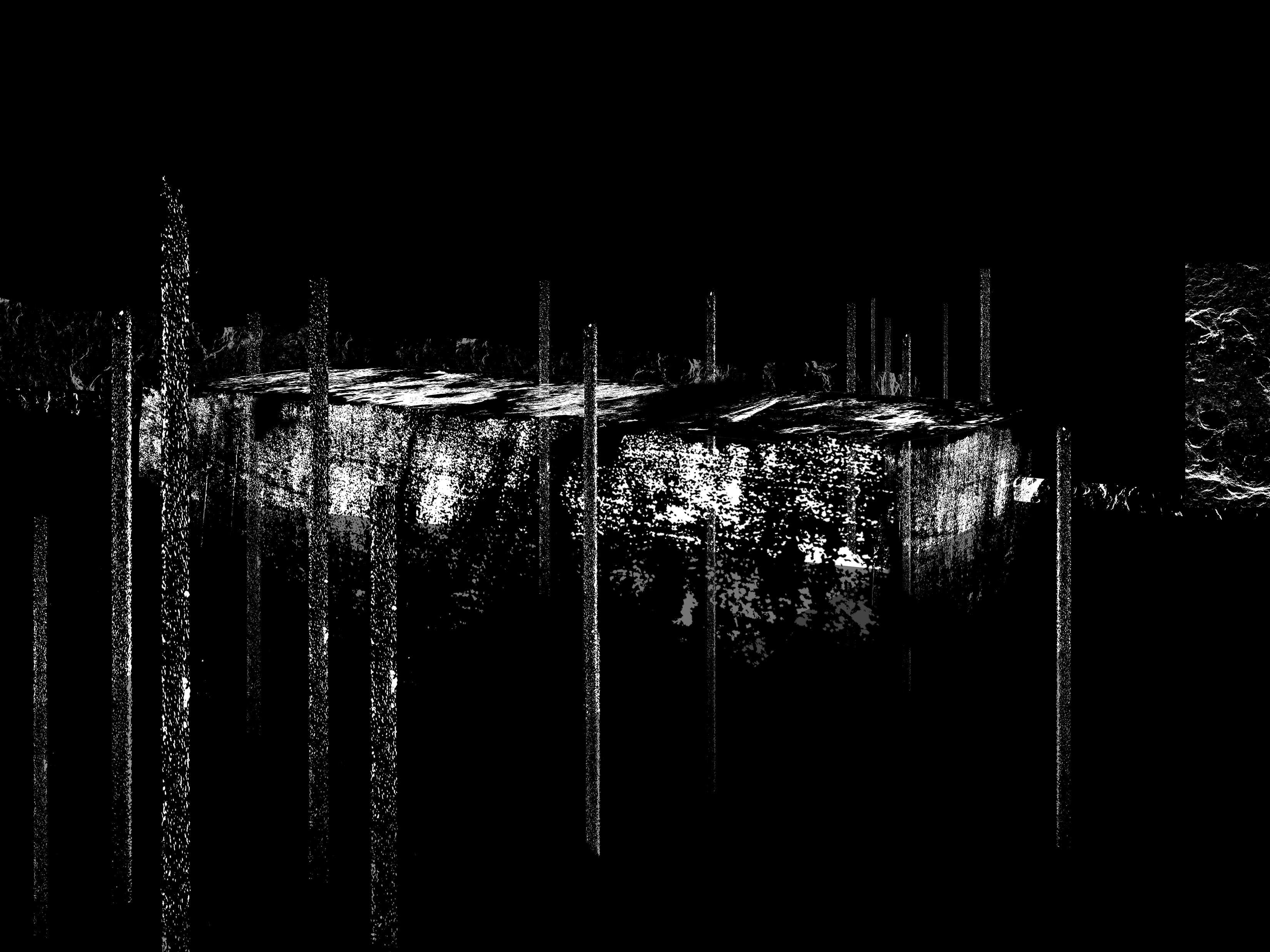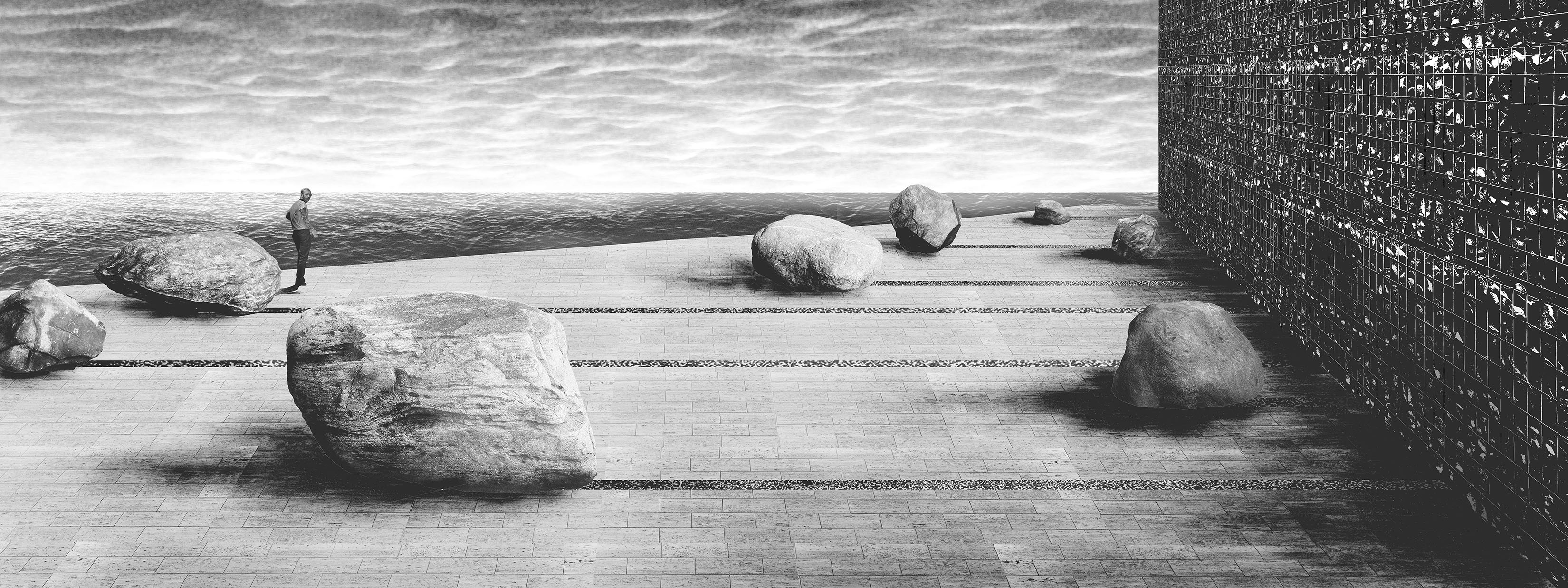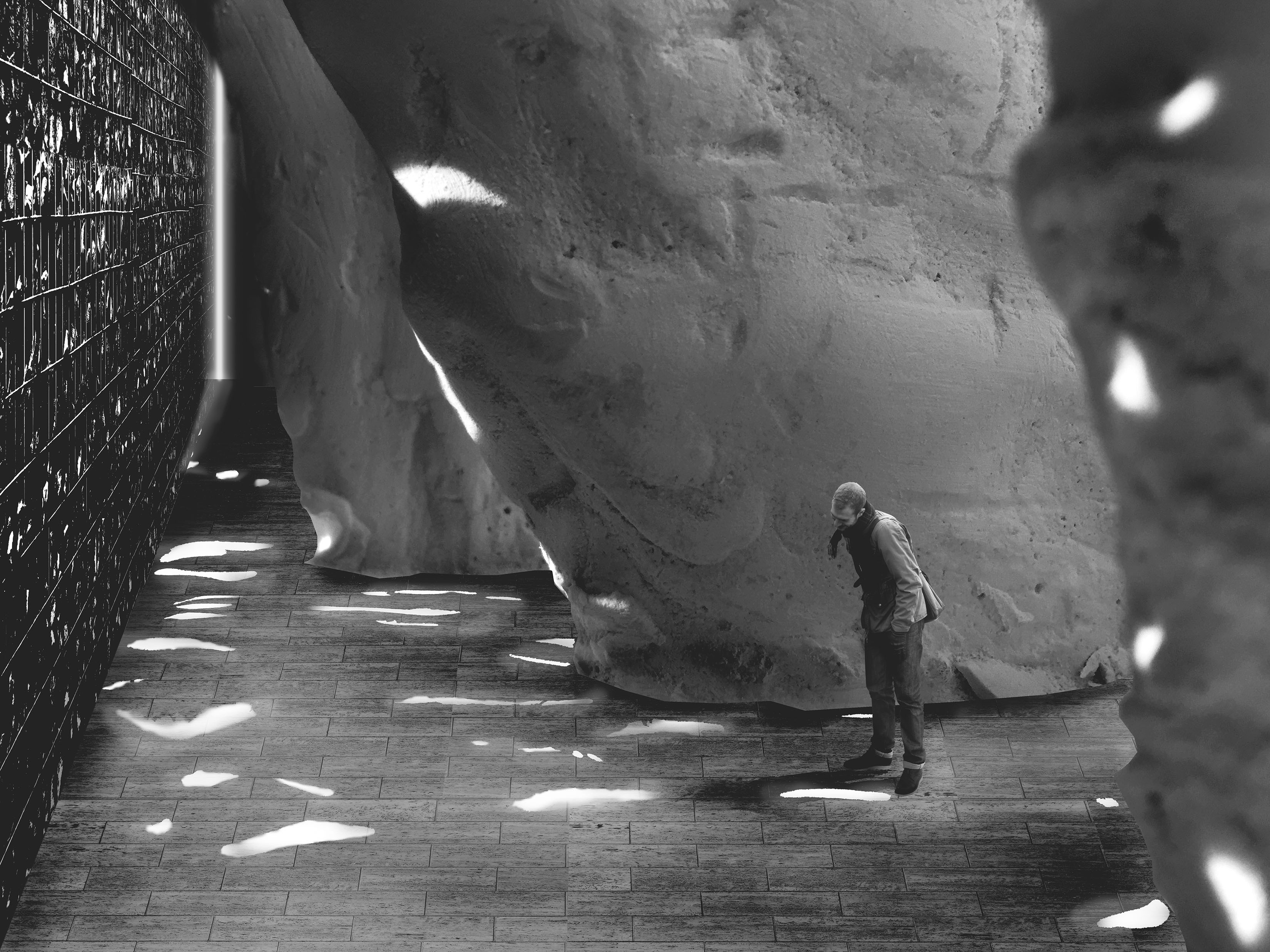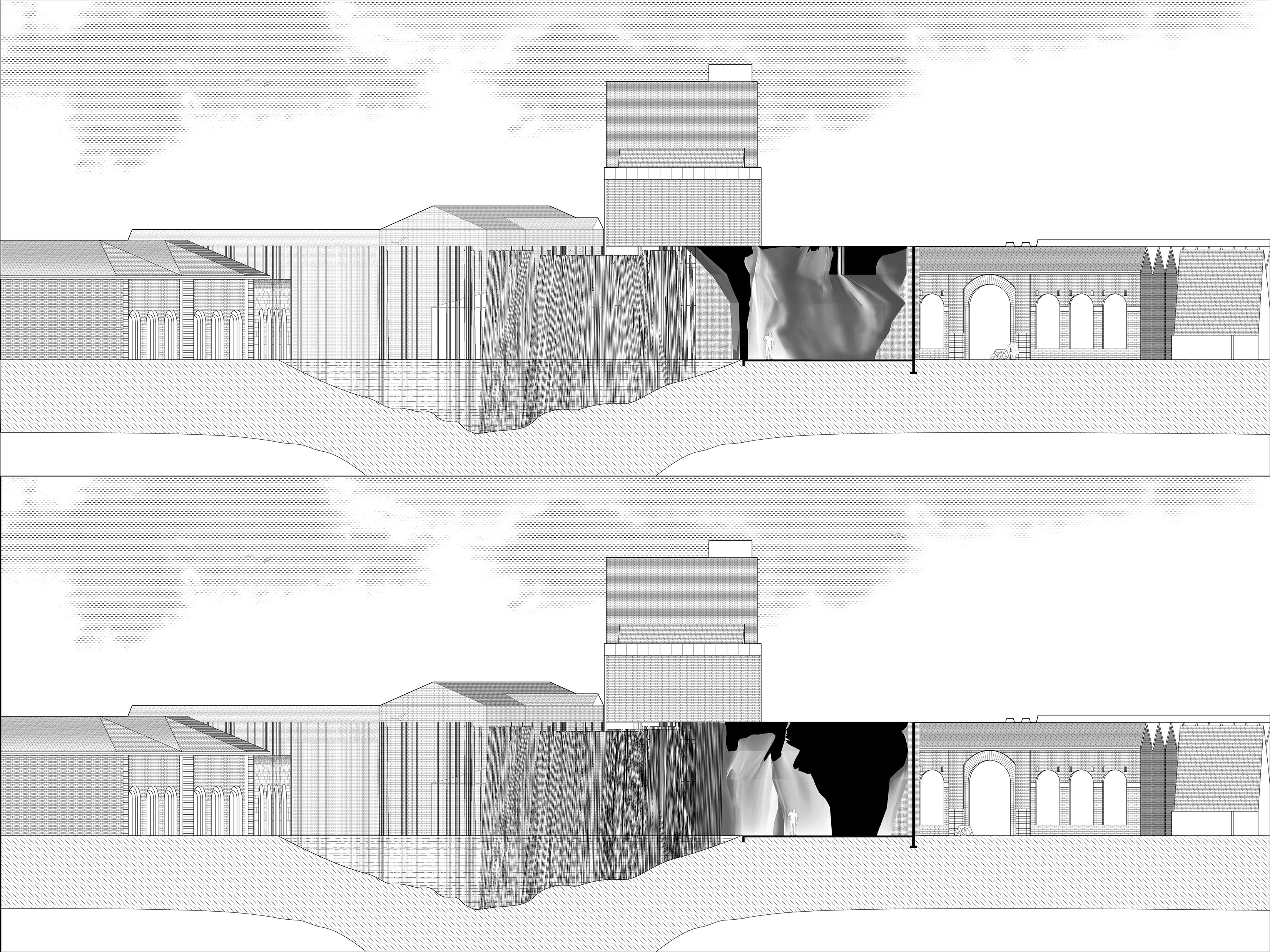Tadzio’s Wait: Vestige
Colleen de Matta
Chris Perez
Zheng Yang
Fifth year BARCH studio
Instructor: Pete Goché
2018
We seek to navigate various material and immaterial mediums with broken pencil and thereby provoke a capacity to speculate on an architectural potential by experimental drawing and sentient-based labor (or making).
Atmosphere is the means whereby architecture can become a tool to procure and obscure what we see as commonplace within the built environment. At the same time, it provides a place within which one can meditate on weathering as a condition. While many obsess over the deterioration of Venice for its beauty, an architecture which presents a new perspective on deterioration as part of its life cycle becomes essential in a time that views the loss of Venice as imminent.
Atmospheric conditions are amongst the key causes of deterioration of Venice’s built environment. Air, light, and water, act as the primordial mediums through which atmosphere presents itself spatially, all contributing to the ongoing decay. The role of architecture there- fore becomes a medium through which the ongoing performative nature of atmospheric deterioration presents itself materially.
To push our definition of both deterioration and drawing further and to explore it as a means of learning, we began material explorations which allowed us to further investigate the spatial and textural effects that deterioration produces. Through the means of casting various objects and disrupting them in a chaotic manner, we produced spatial atmospheres that aided us in a very material understanding of what our architecture could become.
Architecture, here, becomes an armature for sheltered function: it is an intellectual frame- work through which spatial logics can be produced that allows one the ability to enter a metaphysical relationship between the material and immaterial. Vestige, then, posits architecture as an essentialized occasion, or waiting room, whereby the occupant, upon entry, perceives atmospheric deterioration differently, providing a series of spaces wherein one is able to experience the latent nature of light and air immersed in an auditory percussion of the Adriatic Sea colliding with its earthen floor.
Our consequent atmospheric archive and corresponding buoyant passage offers the occupant an occasion in which to attune oneself with that which is immaterial, the lunar tidal rhythm, through the material logics and spatial distribution of the architecture. In doing so, the spatial production implicates the body in an awareness of atmospheric drama. This phenomenological aspect of the architecture allows a lived experience to define the way that users are able to perceive the immateriality of air as their existential envelope. Vestige is the physical manifestation of an intense, and ongoing, investigation aimed at understanding the role of deterioration in the built environment specific to the relationship between mind and matter.


